DIY Open Source 3D Printers
Once you start tinkering with your 3D printer, it can turn from a tool to a hobby. If you get there, you should consider building a DIY open source printer. They are great for tinkering because you get access to the CAD files and you can modify any part on the printer.
You should know that not all DIY printers are open source. Truly open source printer designs have their CAD files freely available, making it very easy to modify them.
Voron family
Voron is probably the best-known name in open source 3D printers. However, it’s not a single printer but rather a line of printers. The Voron team develops the printers, and there’s no company behind it selling the printers or their parts. Each Voron model comes with a bill of materials you need to source and a detailed build manual covering each assembly step. Third parties are coming up with kits, but they are not officially endorsed. All Voron printers are very high quality and very capable machines. The printer lineup consists of the following models:
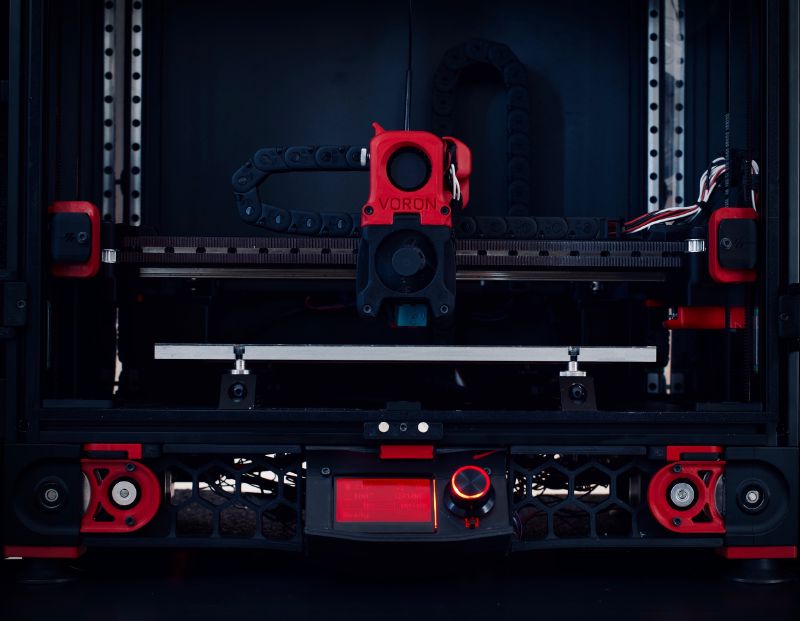
Voron2 (latest revision is 4, designated as V2.4) is the most popular Voron model. It’s the most advanced CoreXY design with a stationary bed and a “flying gantry” which means the printer toolhead moves in Z-axis rather than the bed. A stationary bed at the bottom means the mass is lower, and you get less resonance in the frame for better quality and higher speeds. Voron2 runs the Voron Afterburner toolhead, which is convenient to service and is configurable with various hot end options. It’s a pretty large printer supporting configurations from 250x250x250 to 350x350x350. It’s also the most expensive printer to build because of the complex Z-axis design. Depending on the components you source and the part of the world you are in, it can run $1200-2000.
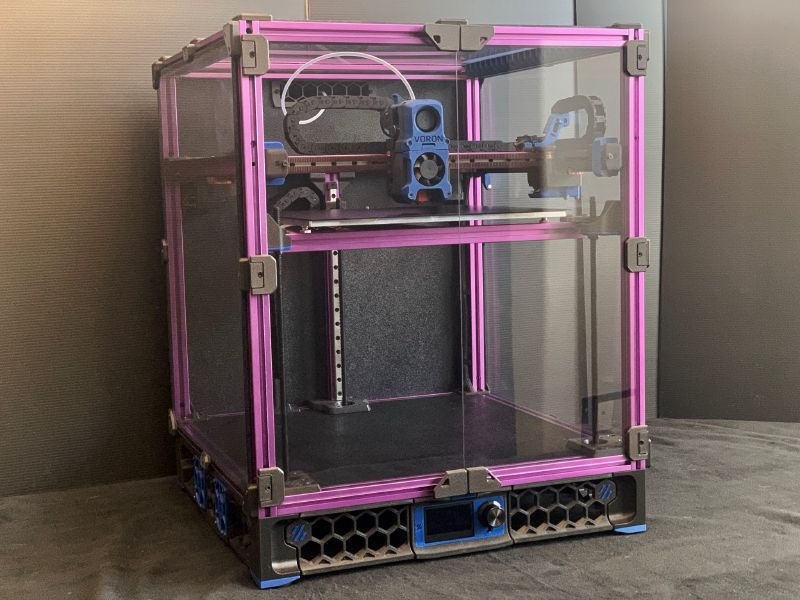
Voron Trident is a more traditional CoreXY printer with the bed moving in Z-axis. Nonetheless, it’s very advanced with three motors for Z-axis movement enabling fully automatic bed leveling. It uses many of the same parts as Voron2, with the main difference being the Z-axis components. Since the toolhead is rigidly mounted, it makes it a bit easier to achieve high accelerations. Trident also runs Afterburner and gets all the benefits of it. It’s a bit cheaper ($1000-1500) since it takes fewer motors and linear rails to build it.

Voron0 (latest revision is 1, designated as V0.1) is the smallest Voron family printer with 120x120x120 build volume. It’s also a CoreXY design with even simpler one leadscrew Z-axis and a manual bed leveling. Voron0 is still a very capable printer, and its small size and lighter moving mass make it a very high-speed printer. Since it’s very compact, it uses a slightly different toolhead and supports fewer hot end options. The parts for Voron0 are somewhat harder to source (for example, it uses less common 1515 extrusions for the frame), but kits are available from various vendors.
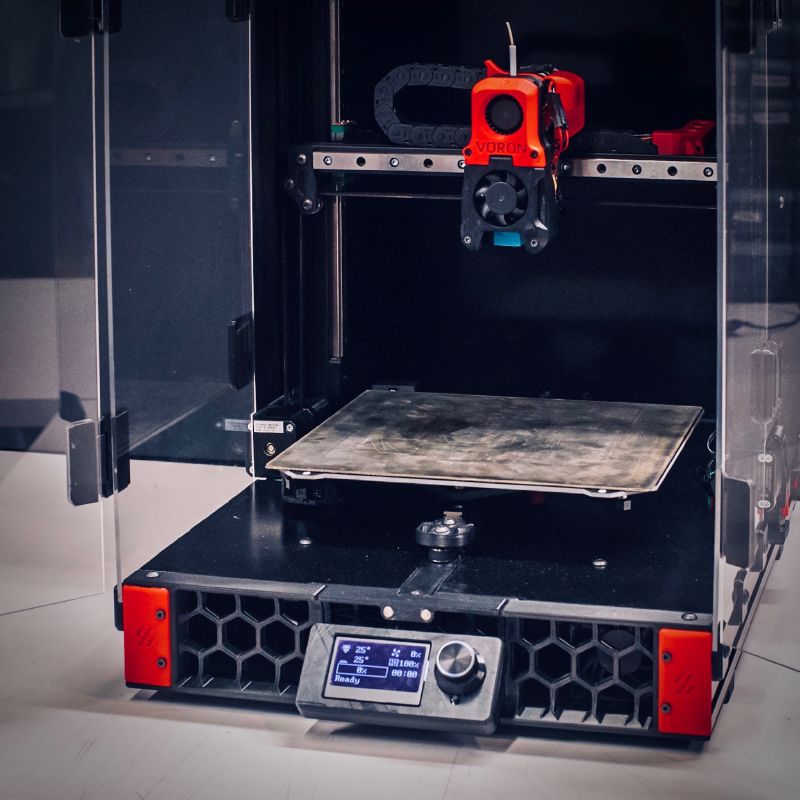
Voron Switchwire is a cartesian style printer in the family. It’s probably the cheapest printer to build in the lineup, and it’s possible to convert other cartesian printers like Ender 3 to Voron Switchwire for even less. It’s an upgrade from a typical cartesian printer because all axis on this printer are belted. Most other printers would use leadscrews for Z-axis that can introduce Z-axis wobble artifacts in the prints while Switchwire is immune to this problem. It also runs the Afterburner toolhead, and you get all the benefits of it as well.
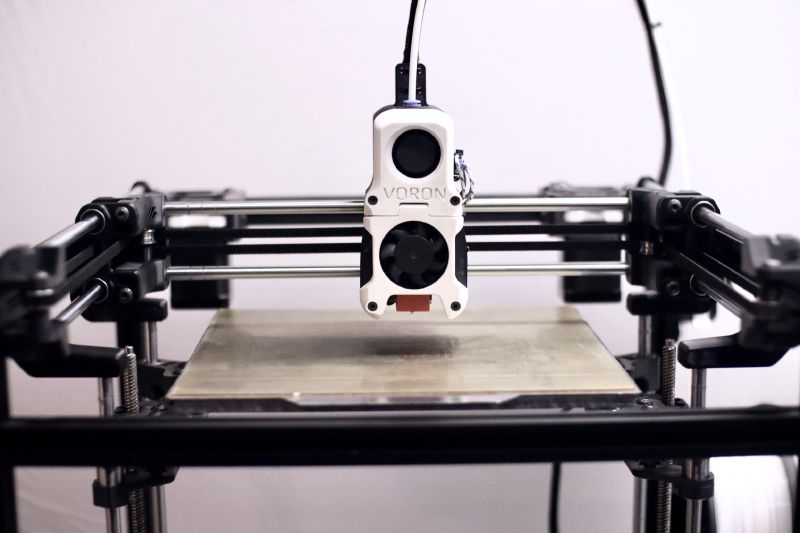
Voron Legacy is an older style printer, hence the name. It’s a throwback to the old days when printer motion systems were using linear rods. Voron Trident superseded this design, but if you have the parts for it laying around, you may still want to build Voron Legacy because it just looks cool.
Rat Rig V-Core

Rat Rig V-Core is another premium CoreXY 3D printer. Unlike Voron, Rat Rig is a company that sells complete kits for V-Core. However, the bill of materials and source files for the design are also freely available online, so you can source the components and build it yourself. Having the official kit available makes it easier to source quality parts, and the cost is similar to Voron2.
V-Core uses 3030 aluminum extrusions, making the frame more rigid than the more commonly used 2020 extrusions. A stiffer construction means less resonance when the printer head is moving around and allows for higher accelerations. V-Core uses 9mm belts which keep tension better with longer belt paths (compared to 6mm on most printers). The 9mm belts enable scaling V-Core to 500x500x500 build volume (the other supported sizes are 300^3 and 400^3). Like Voron Trident, it has a 3-point kinematic bed with automatic bed leveling.
Tiny-M
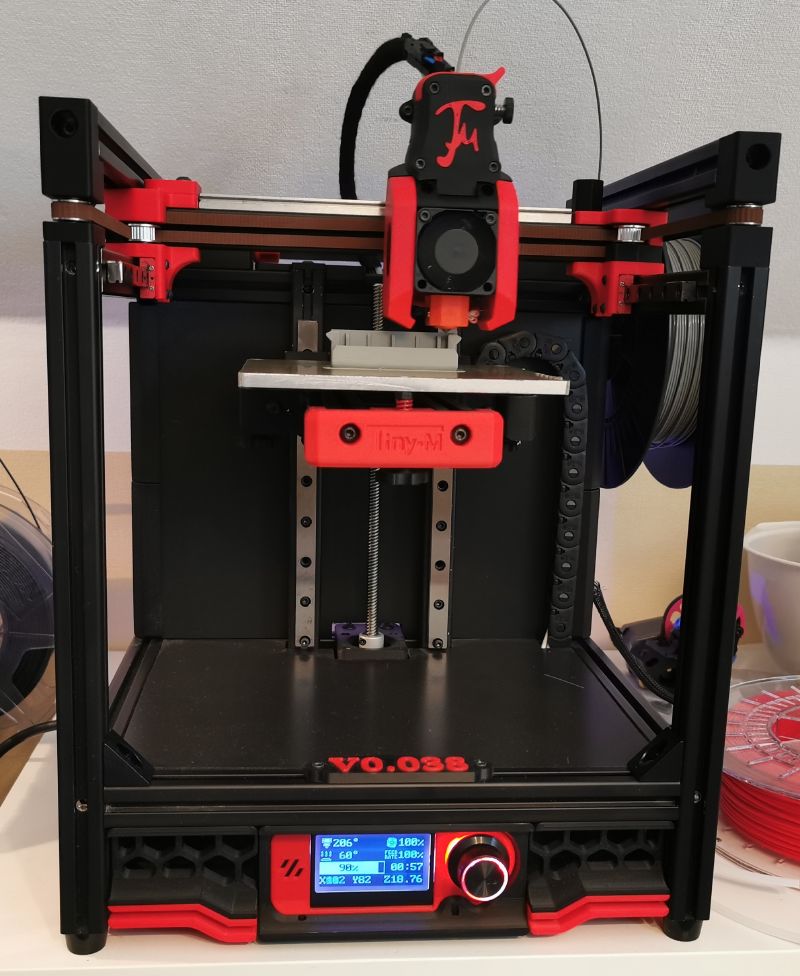
Tiny-M is a Voron0 adaptation using more common components like 2020 aluminum extrusions (vs. 1515) and NEMA17 stepper motors (vs. NEMA14). You get all the benefits of Voron0 and a slightly larger build volume at 150x150x150 (there’s also a mod available for 190x190x190 configuration). You don’t get a detailed build manual for Tiny-M, but you can follow the manual of Voron0 since the process is very similar. Tiny-M should be at a similar price point, but the components will likely be easier to source locally. I think Tiny-M is a better option unless you are specifically looking for the smallest printer possible or you want to get a kit printer (there are kits for Voron0 but none for Tiny-M yet).
HevORT
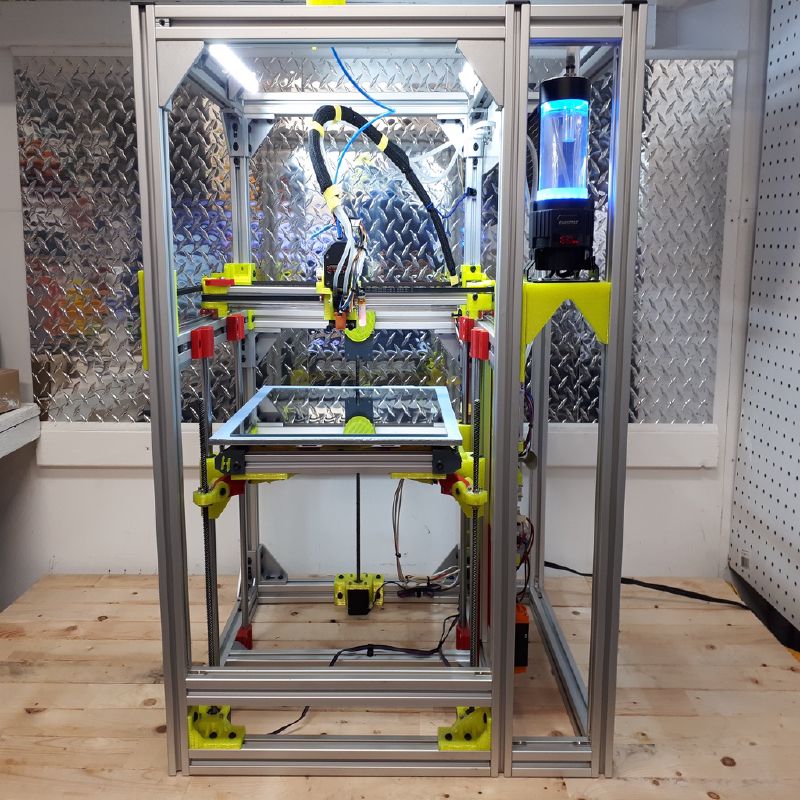
HevORT is another open source CoreXY printer design similar to Voron Trident or Rat Rig V-Core. It’s the most challenging printer to build here because you don’t get a detailed manual like with Voron or Rat Rig printers. HevORT uses some of the most advanced features like a water-cooled hot end, a compressor-powered part cooling, or carbon fiber X-axis. You can think of it as an experimentation platform for the advanced 3D printer features rather than a day-to-day printer, but if you’re in this sort of thing, you might be interested in building it.
Which One Should You Build?
Like with many things in life, no one printer fits all. Here’s how I would go about making my own choice:
-
If you already own an Ender 3 style printer, consider an upgrade to Voron Switchwire.
-
If you look for your first printer and feel confident building it yourself, take a look at Tiny-M. If sourcing the parts seems complicated, consider buying a Voron0 kit.
-
If you want a tiny printer, check out Voron0 or Tiny-M.
-
If you want a medium-large size printer, consider Voron2 or Voron Trident.
-
If you want a very large printer (~ 500x500x5000), Rat Rig V-Core is probably the best option.
-
If you already built those printers, consider Voron Legacy or HevORT for the fun of it.
Last update: October 19, 2021